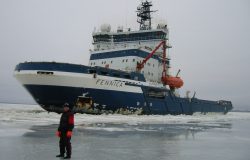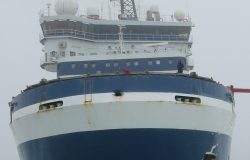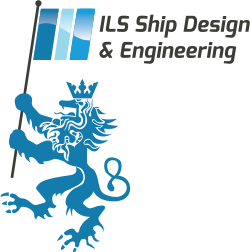Main dimensions
Length, max: 116 m
Breadth: 26 m
Draught, max: 8.4 m
Speed: 16 knots
DWT: 4,500 t
Gross tonnage: 9,392
Diesel-electric machinery: 2 x Wärtsilä 16 V 32D + 2 x Wärtsilä 12 V 32D, a total of approx. 20,000 kW
Propulsion power: 15,000 kW
Azimuthing thrusters: 2 x Aquamaster US ARC
Class notation: ✠ 1A1 Polar 10 Icebreaker Tug Supply vessel SF HELDK EPR E0 Dynpos AUT-R
Bollard pull: 234 t
Operating temperature – 30ᵒC
ILS Commissions:
– Conceptual design,
– Contract design
– Supervision of the shipyard’s basic design and model tests
– Supervision of test runs at the shipyard
– Supervision of full scale ice trials





